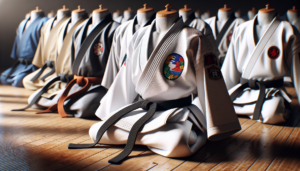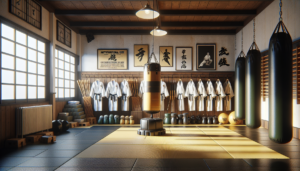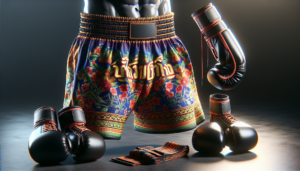Muay Thai, also known as the “art of eight limbs,” is a martial art and combat sport originating from Thailand that has gained global popularity. To ensure fair competition and fighter safety, a set of comprehensive rules and regulations govern the sport. This article will delve into the essential guidelines and regulations of Muay Thai, covering various aspects such as match structure, scoring, equipment, and cultural practices.
Introduction to Muay Thai Rules
History and Evolution of Muay Thai
Muay Thai has a rich history dating back to the mid-16th century, evolving from a combat technique used by Thai warriors to a globally recognized sport. Over time, the rules and regulations of Muay Thai have been refined to prioritize fighter safety and fair competition. The sport’s governing bodies, such as the World Muay Thai Council, have played a crucial role in standardizing these rules across international competitions.
Importance of Rules in Muay Thai
The establishment of clear and comprehensive rules is essential for maintaining the integrity of Muay Thai as a sport. These regulations ensure that fighters compete on a level playing field, with their safety and well-being as a top priority. Muay Thai rules cover various aspects, including match structure, scoring, equipment requirements, and weight divisions, providing a framework for fair and exciting bouts.
Moreover, the rules help to preserve the traditional values and techniques of Muay Thai, such as the emphasis on striking with the fists, elbows, knees, and shins. By adhering to these guidelines, fighters can showcase their skills and strategies while respecting the sport’s rich cultural heritage.
Match Structure and Scoring
Round Length and Duration
A typical Muay Thai match consists of five rounds, each lasting three minutes, with a two-minute rest period between rounds. This structure allows fighters to showcase their endurance, technique, and strategic planning over the course of the bout. The relatively short round duration ensures a high-intensity, action-packed experience for both fighters and spectators.
In some cases, particularly in championship bouts or high-stakes matches, the number of rounds may be increased to seven or even nine. However, the three-minute round duration remains consistent across all levels of competition.
Scoring System
Muay Thai employs a 10-point must system for scoring, similar to that used in professional boxing. Under this system, the winner of each round receives 10 points, while the loser receives 9 points or fewer, depending on the margin of dominance. Muay Thai scoring prioritizes effective striking, with kicks, knees, and elbows often valued more highly than punches.
Judges evaluate fighters based on several criteria, including the number and quality of strikes landed, defensive skills, and overall ring control. The use of sweeps and knockdowns also factors into the scoring, as these techniques demonstrate a fighter’s ability to assert dominance over their opponent.
Winning Methods
There are several ways for a fighter to win a Muay Thai match. The most straightforward is by knockout, where one fighter renders their opponent unable to continue due to strikes. A technical knockout (TKO) occurs when the referee stops the fight due to a fighter being unable to intelligently defend themselves or if a doctor deems a fighter unfit to continue.
If the match goes the full distance, the winner is determined by the judges’ scorecards. In the event of a draw, an extra round may be contested to determine the victor. Alternatively, a fighter can win by disqualification if their opponent commits a serious foul or violates the rules egregiously.
Weight Divisions and Fighter Classification
Weight Classes
To ensure fair competition, Muay Thai fighters are divided into weight classes. These divisions are designed to match fighters of similar size and weight, reducing the potential for mismatches and promoting more evenly contested bouts. The weight classes in Muay Thai are as follows:
| Weight Class | Weight Range (lbs) |
|---|---|
| Mini Flyweight | Under 105 |
| Junior Flyweight | 105-108 |
| Flyweight | 108-112 |
| Junior Bantamweight | 112-115 |
| Bantamweight | 115-118 |
| Junior Featherweight | 118-122 |
| Featherweight | 122-126 |
| Junior Lightweight | 126-130 |
| Lightweight | 130-135 |
| Junior Welterweight | 135-140 |
| Welterweight | 140-147 |
| Junior Middleweight | 147-154 |
| Middleweight | 154-160 |
| Super Middleweight | 160-168 |
| Light Heavyweight | 168-175 |
| Cruiserweight | 175-190 |
| Heavyweight | Over 190 |
Fighters must weigh in prior to the match to ensure they meet the requirements for their respective weight classes. The weigh-in typically takes place the day before the event, allowing fighters time to rehydrate and replenish their energy stores.
Age Requirements
To compete in professional Muay Thai bouts, fighters must meet a minimum age requirement of 15 years old. This age limit helps to protect younger athletes from potential injuries and ensures that competitors have reached an appropriate level of physical and mental maturity.
Some organizations and governing bodies may impose additional age restrictions for championship bouts or high-profile events. For instance, fighters may need to be at least 18 years old to compete for certain titles or participate in international competitions.
Essential Equipment and Safety Measures
Required Gear
To minimize the risk of injury and ensure a level playing field, Muay Thai fighters must adhere to strict equipment requirements. The essential gear for competitors includes:
- Gloves: Fighters wear padded gloves to protect their hands and reduce the impact of strikes. Glove weights vary depending on the fighter’s weight class, with lighter classes using 8-ounce gloves and heavier classes using 10-ounce gloves. Gloves must be provided by the event promoter to ensure consistency and fairness.
- Shorts: Muay Thai shorts are designed to allow for a full range of motion, enabling fighters to execute kicks, knees, and other techniques effectively. The shorts are typically made of satin or nylon and feature an elastic waistband for a secure fit.
- Groin guard: Male fighters must wear a groin guard to protect their sensitive areas during the bout. The groin guard should be made of durable materials and fit snugly to prevent shifting during the fight.
- Mouth guard: All fighters must wear a mouthguard to protect their teeth and gums from impacts. Mouthguards should be form-fitted to the fighter’s teeth and allow for easy breathing during the bout.
In addition to these mandatory items, fighters may choose to wear additional protective gear, such as ankle supports or shin guards. However, these optional items must be approved by the event officials prior to the match.
Safety Protocols
Muay Thai competitions prioritize fighter safety through the implementation of various protocols and safety measures. These measures include:
- Pre-fight medical examinations to ensure that fighters are physically fit to compete.
- The presence of medical professionals at ringside to provide immediate assistance in case of injury.
- Strict enforcement of rules and regulations by referees and judges to minimize the risk of dangerous techniques or unsportsmanlike conduct.
- The use of padded floors and ropes in the ring to reduce the impact of falls or knockdowns.
- Regular equipment inspections to ensure that gloves, headgear, and other gear are in good condition and meet safety standards.
By adhering to these safety protocols, Muay Thai competitions can minimize the risk of serious injuries and provide a safe environment for fighters to showcase their skills.
Techniques and Strategies
Striking Techniques
Muay Thai is known for its diverse array of striking techniques, which fighters employ to outmaneuver and overpower their opponents. The primary striking techniques include:
- Punches: Fighters utilize jabs, crosses, hooks, and uppercuts to strike their opponents and set up more powerful techniques.
- Elbows: Elbow strikes are a hallmark of Muay Thai, with fighters using horizontal and diagonal elbows to inflict damage at close range.
- Knees: Knee strikes are another powerful tool in the Muay Thai arsenal, particularly effective in the clinch or when an opponent is off-balance.
- Kicks: Muay Thai fighters employ a wide variety of kicks, including roundhouse kicks, front kicks, push kicks, and low kicks to the legs.
Fighters often combine these techniques in fluid combinations, mixing high and low strikes to keep their opponents guessing and create openings for more significant attacks.
Clinch Fighting
In addition to striking from a distance, Muay Thai places a strong emphasis on clinch fighting. The clinch refers to the position where fighters are grappling in close proximity, often with their arms locked around each other’s necks or upper bodies.
In the clinch, fighters vie for dominant position, using short strikes, knees, and elbows to wear down their opponents. Skilled clinch fighters can control their opponents, nullifying their offensive capabilities while inflicting damage with well-placed strikes.
Sweeps and throws are also common in the clinch, with fighters attempting to off-balance or take down their opponents to gain a positional advantage. These techniques require a strong understanding of leverage and balance, as well as precise timing to execute effectively.
Cultural Practices and Traditions
Pre-Fight Rituals
Muay Thai is deeply rooted in Thai culture, and this connection is evident in the various rituals and traditions that surround the sport. One of the most iconic pre-fight rituals is the Wai Kru Ram Muay, a ceremonial dance performed by fighters before entering the ring.
During the Wai Kru Ram Muay, fighters pay homage to their teachers, parents, and ancestors, expressing gratitude for their guidance and support. The dance involves intricate hand and foot movements, often mimicking the techniques used in Muay Thai.
Fighters also wear a Mongkol, a sacred headband blessed by their trainers, during the Wai Kru Ram Muay. The Mongkol is believed to provide protection and bring good fortune to the fighter during the bout.
Values and Ethics
Muay Thai is not just a sport but a way of life, with a strong emphasis on values such as respect, discipline, and humility. Fighters are expected to conduct themselves with honor both inside and outside the ring, treating their opponents, trainers, and fans with courtesy and sportsmanship.
The concept of “Jai Yen” or “cool heart” is central to Muay Thai philosophy. It refers to the ability to remain calm and composed in the face of adversity, maintaining mental clarity and emotional control even in the heat of battle.
Fighters are also expected to demonstrate humbleness in victory and graciousness in defeat, acknowledging the efforts of their opponents and showing respect for the sport’s traditions and practitioners.
Role of Officials
Judges and Scoring
Muay Thai matches are evaluated by a panel of three judges who are responsible for scoring each round and determining the winner of the bout. The judges are typically seated at ringside, with a clear view of the action from different angles.
Judges score rounds based on the 10-point must system, awarding 10 points to the winner of the round and 9 or fewer points to the loser. They consider factors such as effective striking, ring control, and overall dominance when assessing a fighter’s performance.
At the end of the match, the judges’ scorecards are tallied to determine the winner. In the event of a draw, an extra round may be contested, or the bout may be declared a draw if no clear winner emerges.
Referee Responsibilities
The referee plays a crucial role in ensuring the safety and fairness of Muay Thai matches. Their primary responsibilities include:
- Enforcing the rules and regulations of the sport, including those related to fouls and unsportsmanlike conduct.
- Monitoring the fighters’ safety, stopping the bout if a fighter is unable to intelligently defend themselves or if a doctor deems them unfit to continue.
- Issuing warnings or deducting points for rule violations or excessive fouling.
- Communicating with the fighters, corners, and other officials to ensure a smooth and orderly contest.
- Making judgment calls in the event of accidental fouls or injuries, determining whether the bout should continue or be stopped.
Referees must possess a deep understanding of Muay Thai rules and techniques, as well as the ability to make split-second decisions in high-pressure situations. They undergo extensive training and certification to ensure they are prepared to handle the demands of officiating at the highest levels of the sport.
In conclusion, the rules and regulations of Muay Thai form the foundation of this dynamic and challenging combat sport. By adhering to these guidelines, fighters, officials, and organizers can ensure fair, safe, and exciting competitions that showcase the best of Muay Thai’s techniques, strategies, and cultural heritage. As the sport continues to grow and evolve, its rules will remain essential in preserving its integrity and appeal to athletes and fans around the world.






